Are You in Control of the 3 Dimensions of Your Digital Strategy?
At QDI, we have been writing about the internet and the internet of things (IoT) for the last couple of years as it continues to shape our clients’ go-to-market strategies. As these technologies evolve and our thinking evolves, we are seeing Digital Channels (E-Commerce) and Digital Products (the internet of things) impacting our client’s product marketing groups and channel organizations – potentially reshaping their entire businesses.
Combining the impact of digital products on digital channels introduces a third dimension of complexity to your digital strategy decisions.
This article introduces these digital movements and begins the challenge of assessing their impact on traditional businesses processes. We end with asking you the following questions about each and about both.
The Internet – E-commerce |
The IoT – the Internet of Things |
Have you mapped out your strategy for integrating digital channels into your marketing delivery system? |
Have you mapped out your strategy for the development, marketing, and use of the data from digital products? |
Do you have specific initiatives in place to build your digital channels? |
Do you have specific initiatives in place to capture the value of your digital products? |
Have you identified the intersection between digital products and digital channels on your go-to-market strategy? |
|
Background
For the last 30+ years, we have used a mental model, we call the Marketing Delivery System, to shape our thinking about channel marketing strategy. As we show below, we have organized go-to-market structures to include four categories of activities:
- The Manufacturer / Service Provider – which is the organization that defines the product or service and produces it. Product management falls into this organization.
- The Manufacturer Channel Support Organization – which is a combination of sales and marketing functions that develops marketing communications, channel strategy, and selects, supports, and manages channels. This includes the marketing, sales management functions, customer service and logistical support.
- The Marketing Channels – which are the dealers, distributors, agents and / or direct field sales organization that interfaces with customers
- The Customers who purchase and use your products
As the chart shows, the marketing channels – distributors, dealers, and direct or independent sales reps have the primary interactions with customers. This has been a historic challenge for marketers, as the visibility the product groups or channel support organizations have had to the customer has been limited.
Traditional Marketing Delivery System
As we wrote in our white paper, “Building a Clearer Market Vision: How to Achieve Channel Transparency,” it’s easy for organizations that market through independent channels to have impaired market vision. In fact, many organizations who have tried to implement CRM systems have found that their own direct sales reps often give them a blurry picture of what is happening in the market. The channels see and interact with the customer. The feedback marketers get from their channels, which have the primary interaction with customers, has often been sporadic, sometimes self-serving and seldom structured to provide enough clarity to make decisions.
As a result, product management has limited visibility to customer needs and the manufacturer channel support organization often finds itself reacting to information from the channels that may be late or even inaccurate.
The Internet and IoT Are Rapidly Changing This Landscape
The new “RED” lines in the Marketing Delivery Systems model below show new lines of communication between the customer and the marketer’s organization. With digital channel solutions, you can have direct customer / marketer interactions where the digital channel can take over many of the roles of the traditional physical channel.
Impact of Digital Channels / E-Commerce
Much of the marketing focus for the last few years has been on building the digital channels and capturing the value of the data that can flow through these.
The Traditional Go-To-Market Model Provides Insight the Digital Channels
B2B sales and marketing used to be rather straight-forward, even though it was complex.
To sell his products, manufacturers built marketing organizations that addressed “pre-sale,” “transaction,” and “post-sale” requirements to market their products. As the chart below shows, the channels – dealers / distributors / sales agents – were the ones most responsible for helping customers throughout most of this customer journey. While marketing groups within the manufacturers would provide information through advertising, literature and trade shows that was designed to help customers see the need, identify solutions and have information to help them make their decisions, the sales channels were the ones with direct customer access and communications.
Traditional Customer Purchase Journey and Channel Roles
The Digital World Is Changing Everything in This Business Model
Customers are spending much of their time learning about products and even purchasing products on the internet, providing marketers the opportunity for greater transparency and greater impact on customer value.
Manufacturers are creating sites (digital channels) to enable this, including selection tools, very sophisticated configurators, and order entry systems.
- In some markets customer are using these at the manufacturers site – changing manufacture and channel roles
- In some markets manufactures make these available through the dealer’s website preserving the channel role but still changing the manufacturing – dealer power and relationship
These web capabilities are creating a stream of information about customer behavior (interest in products, etc.) that can be captured and analyzed by the manufacturer.
We all know the internet has changed how we market. Now the manufacturer/ marketer can be directly involved in almost every step of the customer journey. This is radically shaking up distribution.
Customer Purchase Journey and Channel Roles in a Digital / E-Commerce Marketplace
For the last 50 plus years, as manufacturers have had to rely more and more on “distribution channels,” either in addition to or as replacements to their own direct sales forces, these manufacturers have tried to get greater visibility to and control over the customer interaction activities of their distribution channels. Manufacturers have set multiple requirements on their channels for training, reporting, inventory levels, etc. But in spite of all of this, the manufacture had limited visibility to the actual interactions between the distributors and dealers and their customers.
Now manufacturers have to decide HOW MUCH CONTROL they want to take over the entire customer journey. The answer to this will impact channel economics and the shape of the marketplace.
The Added Impact of Smart Products
On top of the evolution of digital channels, we now have digital products (IoT).
Digital products are smart, connected products that send information from the product itself to the manufacturer about things such as when, where and how hard it is working and its health. Manufacturers are even going further and hooking up networks for products to impact decisions beyond individual products. Fleet management tools in the on-road and off-road equipment markets are moving this direction.
These smart digital products introduce new dimensions into the Market Delivery System with new primary information flows directly to the manufacturer’s cloud and on to any entity he desires.
Impact of Digital / Smart Products (IoT) &
Digital Channels (E-Commerce)
Digital products that are surfacing in every industry are changing what and how manufacturers develop and sell products and services.
- Smart digital products provide data that can point manufacturers to product improvements
- Smart digital products provide data that can automatically change processes to save time, money and lives as well as provide data that customers can use to make changes in their business that save time, money and lives.
It’s the second dimension of smart products that is challenging marketers — providing data the customers can use to save time, money and lives. Data alone does not create the savings. Customers have to learn how to use the data in their businesses to capture these savings. The challenge for manufacturers of smart machine is, “to learn how to identify and to sell these data enabled solutions” and to determine the role their distribution channels should play in doing so. So far, we are seeing lots of data by limited translation of that data to value to anyone.
5 Questions to Assess Your Control of Digital Channels and the IoT’s Impact?
This article has introduced two digital movements that will revolutionize and disrupt your business – Digital Channels / E-Commerce and Digital / Smart Products from the IoT. Ask yourself how prepared you are to face both of these challenges and how you can use the power of both to grow your business.
The Internet – E-commerce |
The IoT – the Internet of Things |
Have you mapped out your strategy for integrating digital channels into your marketing delivery system? |
Have you mapped out your strategy for the development, marketing, and use of the data from digital products? |
Do you have specific initiatives in place to build your digital channels? |
Do you have specific initiatives in place to capture the value of your digital products? |
Have you identified the intersection between digital products and digital channels on your go-to-market strategy? |
|
Please post your comments and thoughts.

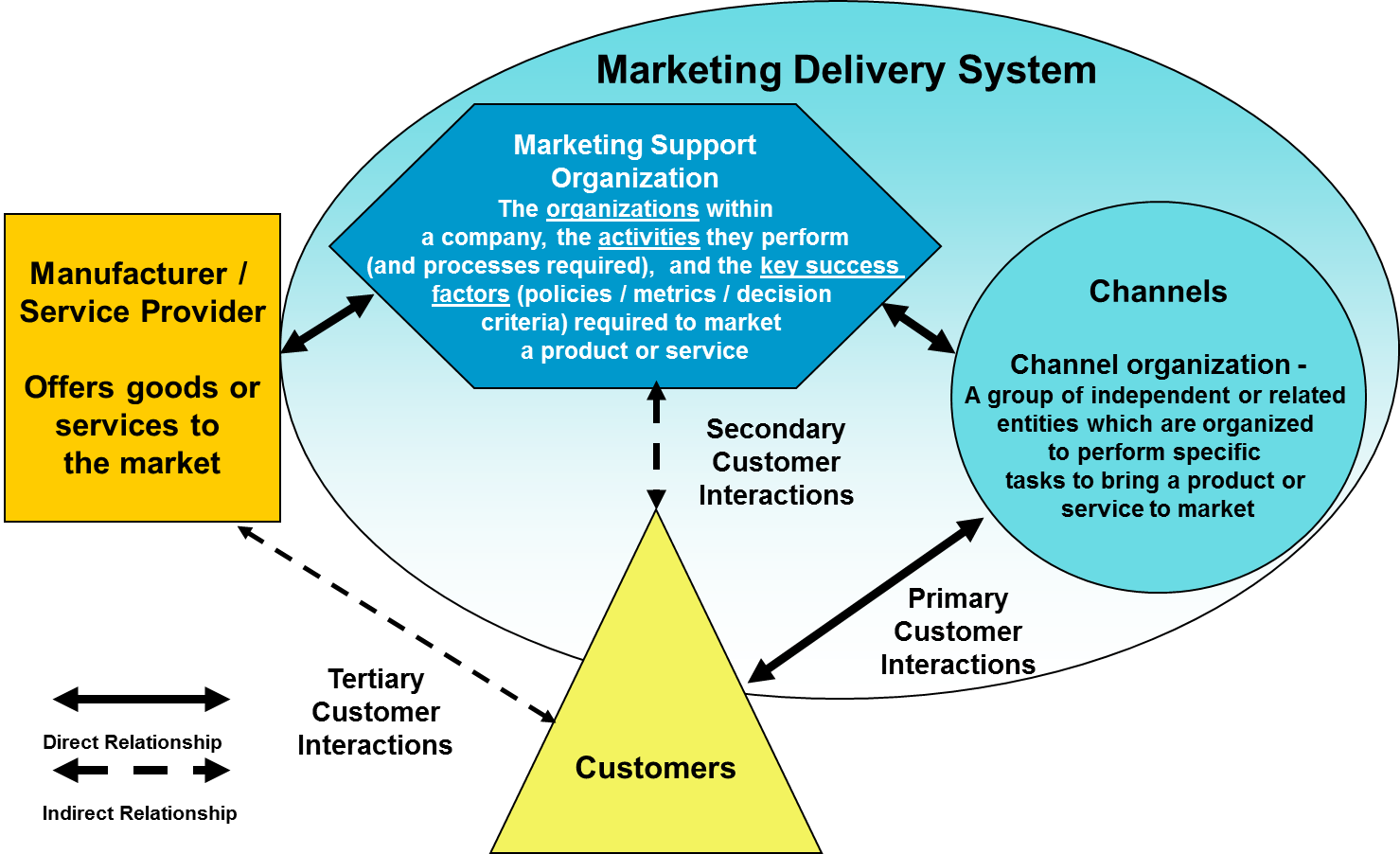
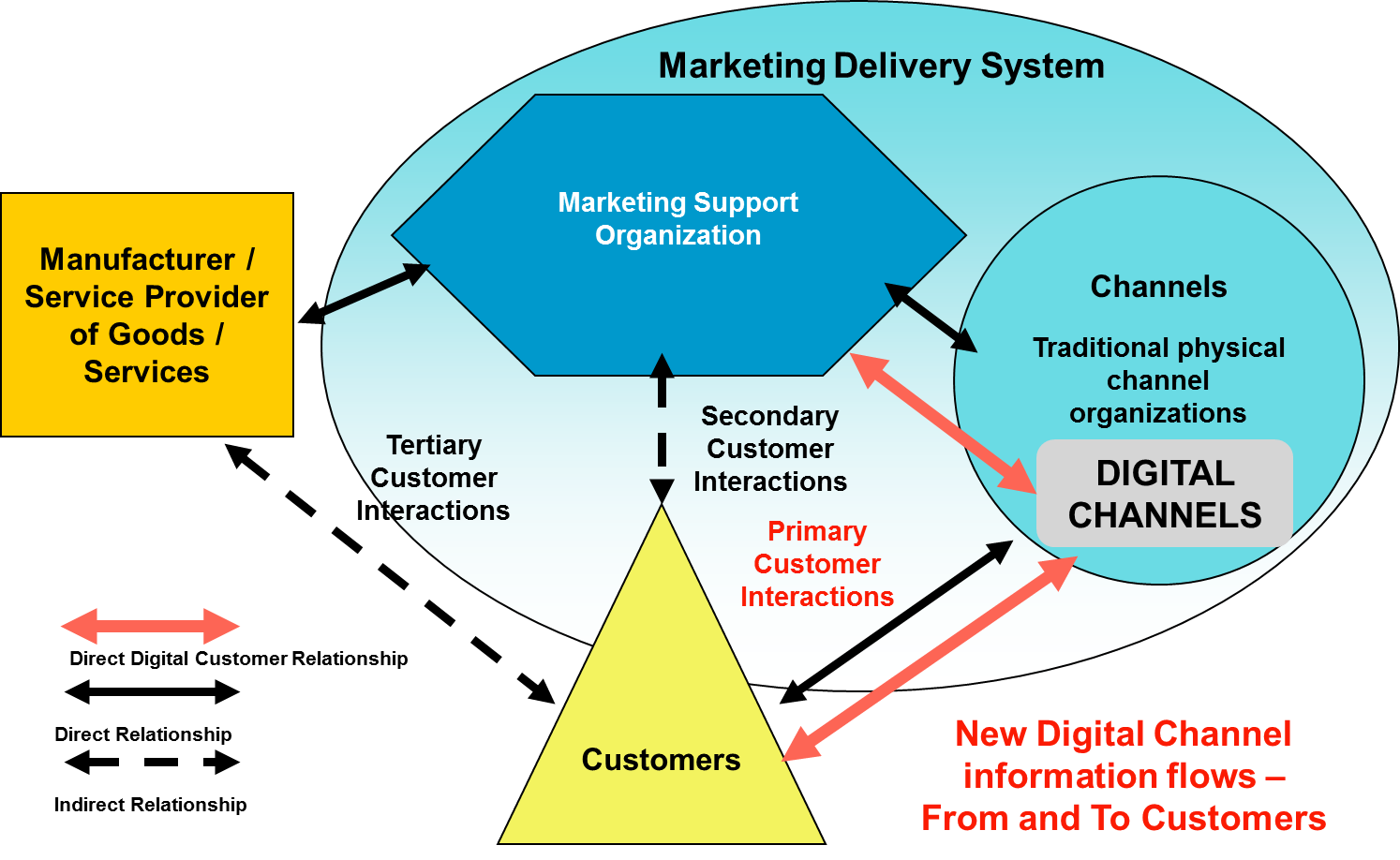

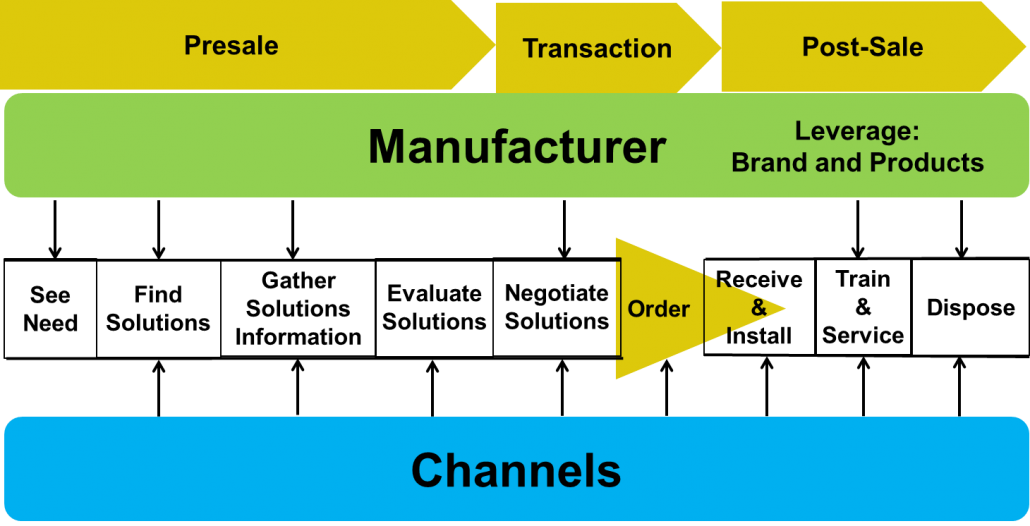
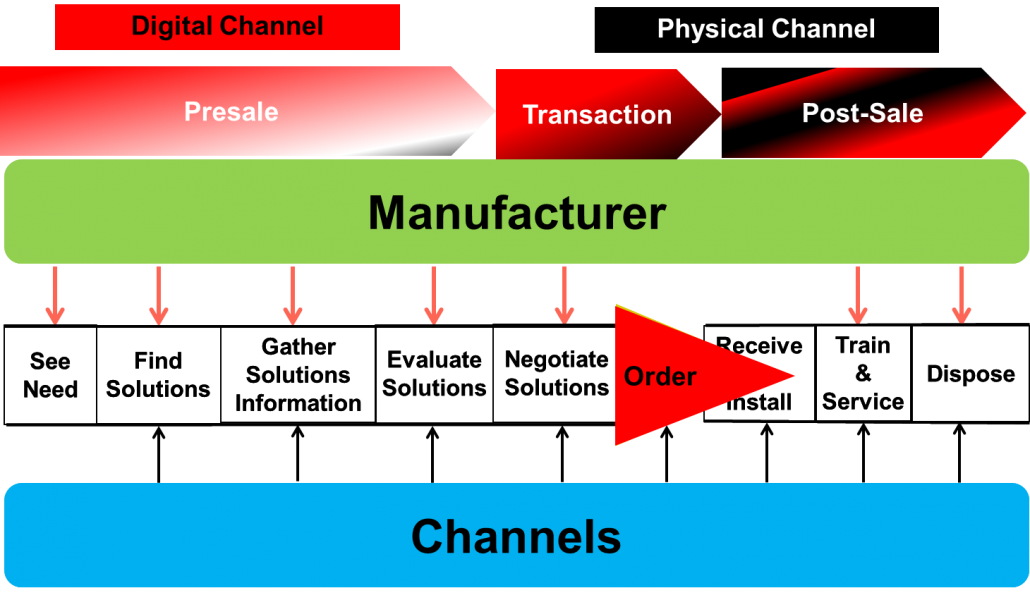
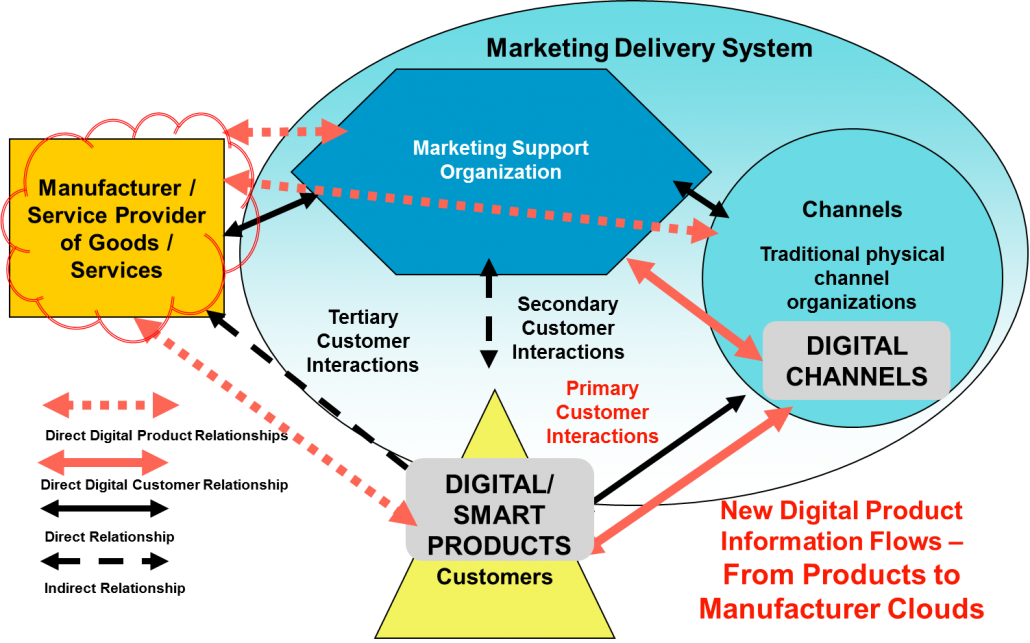
Leave a Reply
Want to join the discussion?Feel free to contribute!